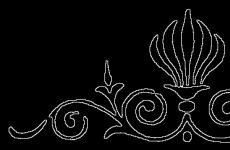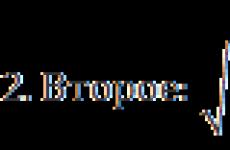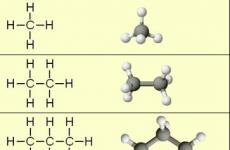Download schemes for operational quality control of construction, repair and construction and installation work. Schemes of input and operational control of the quality of construction and assembly works of the card of operational quality control of construction
Regulatory documents regulating the quality of construction and installation works, building materials, products and structures
Test methods and quality control of building materials, products and structures when performing construction and installation work
Part 1. Construction work
A. Earthworks
1. Development of recesses (tranches) under construction
2. Development of catlovanov excavators
3. Development of trenches under pipelines in unknown soils
4. Backside
5. Vertical layout
6. Device of embezzlement
B. Foundation Device
7. Installation of belts of tape foundations
8. Installation of blocks of walls underground buildings
9. Installation of blocks of a glass type
10. The device of pile foundations
11. Device of teams
12. Device of monolithic scratch
13. The device of horizontal waterproofing foundations from cement solutions
B. Concrete work
14. Installation of inventory formwork
15. Revenue work
16. Laying concrete mixes
17. Device of monolithic concrete and reinforced concrete walls
18. Device of monolithic concrete and reinforced concrete columns
19. Device of monolithic concrete and reinforced concrete foundations
Mr. Stone Work
20. Laying of walls
21. Laying partition
22. Laying Pillars
D. Mounting work
23. Installation of reinforced concrete columns of single-storey buildings
24. Installation of precast concrete columns of multi-storey buildings
25. Installation of reinforced concrete rheel, beams, farms
26. Installation of slabs of floors and coatings
27. Installation of staircase marches and sites
28. Installation of balcony plates and jumpers
29. Installation of outdoor wall panels of frame buildings
30. Installation of panels, blocks of bearing walls of buildings
31. Installation of bulk blocks of elevator mines
32. Installation of precast concrete ventilation blocks
33. Installation of bulk blocks
34. Installation of sanitary cabins
35. Installation of gypsum concrete partitions
36. Installation of asbestos-cement extrusion panels and plates
37. Installation of frame-and-wing partitions
38. Installation of walls from the Sandwich panels and polystic assembly
39. Welding of mounting compounds of reinforced concrete structures
40. Anticorrosive protection of steel mortgage products
41. Sealing joints
42. Measurement of joints and seams
43. Device of the garbage industry
E. Roofing and insulating work
44. Preparation of bases and underlying elements of insulation and roofing
45. The heat insulation device from bulk materials
46. \u200b\u200bHeat insulation device from plates
47. Device of isolation from rolled materials
48. The insulation device of polymer and emulsion-bitumen compositions
49. Roofing device from roll materials
50. Roofing device from piece materials
51. The roofing device from polymer and emulsion-bitumen compositions
52. Device of the roof of metal
J. Joiner's work
53. Installing window blocks
54. Installation of door blocks
55. Device of antlesole, cabinets
Z. Flooring device
56. Preparation of soil bases under the floors
57. Device of a concrete underlying layer, screeds
58. Floor sound insulation device
59. Device of the floating waterproofing floor
60. Bitumen waterproofing device
61. Device of monolithic coatings
62. Flooring device from ceramic tile
63. Device of mosaic floors
64. The device of floors from polymeric materials
65. Laying of lags in floors floors
66. Laying of Lag on the Pilthies on the Soil Base
67. Device of board floors
68. Flooring device from piece parquet
69. The device of floors from the shield parquet
I. Finishing work
70. Plastering (simple plaster)
71. Plastering (improved stucco)
72. Plastering (high-quality plaster)
73. Plastering (coatings made of dry plaster plaster)
74. Painting works (painting by water compositions)
75. Painting works (painting anhydrous compositions)
76. Facing work
77. Wallpaper work
78. Glass work (glazing of the binding)
79. Glass work (installation of glass blocks and fiberglass)
80. Device of fencing of fiberglass
81. Finishing (facing) walls panels, sheets with factory finishing
82. Installation of suspended ceilings in the interiors of buildings
K. Improvement
83. Drainage device
84. Device of a cabinet from concrete and asphalt concrete
85. The device of sidewalks and tracks from the plates
86. The device of a rubber base and asphalt concrete coating
Part 2. Repair and construction work
1. Repair and strengthening of old foundations
2. Laying of precast concrete slabs of floors when reconstructing brick buildings
3. Device of monolithic sites in overlaps
4. Installation of slabs of floor beams
5. Strengthening brick columns and common
6. Installation of metal jumpers
7. Installation of stairs on metal cosos
8. Device of a chalk system from wooden elements
9. Repair of plaster
10. Repair of plaster facades of buildings
11. Coloring facades
12. Installation of stucco parts of facades
13. Installation of drain pipes
Part 3. Mounting work
1. Device of holes and furrows for laying pipelines
2. Installation of cast iron pressure pipelines
3. Installation of pressure pipes from asbestos-cement pipes
4. Installation of indoor cold and hot water pipelines
5. Installation of reinforced concrete and concrete non-pressure pipelines
6. Installation of sewage pipelines from ceramic pipes
7. Installation of the internal sewage system and drain
8. Installation of waterborne reinforcement
9. Installation of the bath and washbasin
10. Installation of sanitary devices
11. Installation of the internal heating system
12. Installation of metal air ducts
13. Electrical displacement device
14. Device of round reinforced concrete wells
15. Installation of heating chambers
16. Installation of disadvantaged channels
17. Isolation of pipelines of heat
The price of this document is still unknown. Click the "Buy" button and place the order and we will send you the price.
We distribute regulatory documentation since 1999. We pierce checks, pay taxes, accept all legitimate forms of payments without additional interest. Our clients are protected by law. LLC "TsNTI NORMOKONTROL"
Our prices are lower than in other places, because we work directly with document providers.
Delivery methods
- Urgent courier delivery (1-3 days)
- Courier delivery (7 days)
- Pickup from the Moscow office
- Mail of the Russian Federation
The manual is intended for customers (developers), construction and installation organizations, specialists of state construction supervision, as well as engineering and technical workers directly employed on the construction of buildings and structures
- Replaces the schemes of operational quality control of construction, repair and construction and installation work
Introduction
Regulatory documents regulating the quality of construction and installation works, building materials, products and structures
Test methods and quality control of building materials, products and structures when performing construction and installation work
Part 1. Construction work
A. Earthworks
1. Development of recesses (tranches) under construction
2. Development of catlovanov excavators
3. Development of trenches under pipelines in unknown soils
4. Backside
5. Vertical layout
6. Device of embezzlement
B. Foundation Device
7. Installation of belts of tape foundations
8. Installation of blocks of walls underground buildings
9. Installation of blocks of a glass type
10. The device of pile foundations
11. Device of teams
12. Device of monolithic scratch
13. The device of horizontal waterproofing foundations from cement solutions
B. Concrete work
14. Installation of inventory formwork
15. Revenue work
16. Laying concrete mixes
17. Device of monolithic concrete and reinforced concrete walls
18. Device of monolithic concrete and reinforced concrete columns
19. Device of monolithic concrete and reinforced concrete foundations
Mr. Stone Work
20. Laying of walls
21. Laying partition
22. Laying Pillars
D. Mounting work
23. Installation of reinforced concrete columns of single-storey buildings
24. Installation of precast concrete columns of multi-storey buildings
25. Installation of reinforced concrete rheel, beams, farms
26. Installation of slabs of floors and coatings
27. Installation of staircase marches and sites
28. Installation of balcony plates and jumpers
29. Installation of outdoor wall panels of frame buildings
30. Installation of panels, blocks of bearing walls of buildings
31. Installation of bulk blocks of elevator mines
32. Installation of precast concrete ventilation blocks
33. Installation of bulk blocks
34. Installation of sanitary cabins
35. Installation of gypsum concrete partitions
36. Installation of asbestos-cement extrusion panels and plates
37. Installation of frame-and-wing partitions
38. Installation of walls from the Sandwich panels and polystic assembly
39. Welding of mounting compounds of reinforced concrete structures
40. Anticorrosive protection of steel mortgage products
41. Sealing joints
42. Measurement of joints and seams
43. Device of the garbage industry
E. Roofing and insulating work
44. Preparation of bases and underlying elements of insulation and roofing
45. The heat insulation device from bulk materials
46. \u200b\u200bHeat insulation device from plates
47. Device of isolation from rolled materials
48. The insulation device of polymer and emulsion-bitumen compositions
49. Roofing device from roll materials
50. Roofing device from piece materials
51. The roofing device from polymer and emulsion-bitumen compositions
52. Device of the roof of metal
J. Joiner's work
53. Installing window blocks
54. Installation of door blocks
55. Device of antlesole, cabinets
Z. Flooring device
56. Preparation of soil bases under the floors
57. Device of a concrete underlying layer, screeds
58. Floor sound insulation device
59. Device of the floating waterproofing floor
60. Bitumen waterproofing device
61. Device of monolithic coatings
62. Flooring device from ceramic tiles
63. Device of mosaic floors
64. The device of floors from polymeric materials
65. Laying of lags in floors floors
66. Laying of Lag on the Pilthies on the Soil Base
67. Device of board floors
68. Flooring device from piece parquet
69. The device of floors from the shield parquet
I. Finishing work
70. Plastering (simple plaster)
71. Plastering (improved stucco)
72. Plastering (high-quality plaster)
73. Plastering (coatings made of dry plaster plaster)
74. Painting works (painting by water compositions)
75. Painting works (painting anhydrous compositions)
76. Facing work
77. Wallpaper work
78. Glass work (glazing of the binding)
79. Glass work (installation of glass blocks and fiberglass)
80. Device of fencing of fiberglass
81. Finishing (facing) walls panels, sheets with factory finishing
82. Installation of suspended ceilings in the interiors of buildings
K. Improvement
83. Drainage device
84. Device of a cabinet from concrete and asphalt concrete
85. The device of sidewalks and tracks from the plates
86. The device of a rubber base and asphalt concrete coating
Part 2. Repair and construction work
1. Repair and strengthening of old foundations
2. Laying of precast concrete slabs of floors when reconstructing brick buildings
3. Device of monolithic sites in overlaps
4. Installation of slabs of floor beams
5. Strengthening brick columns and common
6. Installation of metal jumpers
7. Installation of stairs on metal cosos
8. Device of a chalk system from wooden elements
9. Repair of plaster
10. Repair of plaster facades of buildings
11. Coloring facades
12. Installation of stucco parts of facades
13. Installation of drain pipes
Part 3. Mounting work
1. Device of holes and furrows for laying pipelines
2. Installation of cast iron pressure pipelines
3. Installation of pressure pipes from asbestos-cement pipes
4. Installation of indoor cold and hot water pipelines
5. Installation of reinforced concrete and concrete non-pressure pipelines
6. Installation of sewage pipelines from ceramic pipes
7. Installation of the internal sewage system and drain
8. Installation of waterborne reinforcement
9. Installation of the bath and washbasin
10. Installation of sanitary devices
11. Installation of the internal heating system
12. Installation of metal air ducts
13. Electrical displacement device
14. Device of round reinforced concrete wells
15. Installation of heating chambers
16. Installation of disadvantaged channels
17. Isolation of pipelines of heat
Schemes of input and operational quality control of construction and installation work
Part IV, Issue 2
HEATING NETWORK
Tests and flushing pipelines of thermal networks
Technical requirements
SNIP 12-01-2004 Organization of construction.
SNiP 3.05.03-85 thermal networks.
Snip 12-04-2002 Labor safety in construction. Part 2. Construction production.
PB 10-573-03 rules of device and safe operation of steam and hot water pipelines.
SP 41-105-2002 Design and construction of thermal networks of the Bedless gasket from steel pipes with industrial thermal insulation from polyurethane foam in a plastic shell.
SP 41-106-2004 Design and installation of underground pipelines of heat supply and hot water supply from asbestos-cement pipes.
SP 41-107-2004 Design and installation of underground pipelines of hot water supply from PE-C pipes with thermal insulation of polyurethane foam in a polyethylene sheath.
General provisions
Tests and flushing (purge) of pipelines of thermal networks should be carried out in accordance with the requirements of the project, SNiP 3.05.03-85, SNiP 12-04-2002, PB 10-573-03, SP 41-105-2002, SP 41-106- 2004, SP 41-107-2004, PPR, technological maps, operational quality control schemes and other technological documentation approved in the prescribed manner and operating in the quality management system.
Safety testing pipelines must be provided on the basis of the implementation of the following decisions on labor protection contained in the organizational and technological documentation (PRP, etc.):
Determination of the test program;
Safety measures when performing work in trenches, wells and at height;
Special security measures when conducting a pneumatic testing of pipelines.
Test pipelines should be carried out under the direct guidance of a specially dedicated person from the number of specialists of the assembly organization.
Before testing is necessary:
Head of work to familiarize the staff involved in the trials, with the procedure for holding work and measures to fulfill their implementation;
Warn working on adjacent sections about the time of testing;
Conduct testing of measurement instruments and plugs;
Protect and designate the relevant signs of the test zone;
Check the absence inside foreign items inside pipelines;
Denote by warning signs temporary plugs, hatches and flange connections;
Set posts based on one post within the visibility of another, but at least every 200 m from each other, to prevent the dangerous zone;
Identify places and conditions for the safe stay of persons engaged in the test;
Provide illumination of jobs at least 50 LCs;
Define persons responsible for performing security measures provided for by the test program.
| Controlled operations | Composition and means of control | Documentation |
| Preparatory work | Check: The presence of PPR, technological maps, quality control circuits (SOKK), test programs, performance of labor safety measures; | PPR, Technological Cards, Sokk, Test Program |
| - completion and proper design of preceding work on laying pipelines, on welding butt compounds and correction of detected defects, for testing welded compounds, waterproofing pipelines; | Acts of examination of hidden work with executive documentation; Act of testing |
|
| - completion of work on the installation of equipment and control and measuring equipment; | ||
| - installation of plugs at the ends of the test pipelines and instead of compensators and partitioning valves; | ||
| - the readiness of filling, crimping and emptying of the pipeline, completion of the installation of temporary communications, installation of instruments and cranes required for testing; | ||
| - availability of access to welded joints for their external inspection during testing; Organization of duty at the border of the danger zone. | ||
| Testing and (purge) of pipelines of thermal networks | Control: Compliance with the specified technology for the production of pipelines for strength and tightness; | Common and Special Journals |
| - drop in pressure during testing; | ||
| - the presence or absence of signs of gap, leaks or fogging in welds, leaks mainly metal, flange compounds, reinforcement, compensators, and other elements of pipelines, signs of shift or strain pipelines and fixed supports; | ||
| - Elimination of pipeline defects identified during testing and compliance with the technology of repeated testing of pipelines. | ||
| Accept | Check: Compliance of test parameters and its results of the project requirements and regulatory documents; | Act on conducting preliminary testing of the pipeline |
| - no defects in welds and connections; | ||
| - lack of signs of shift or strain pipelines and fixed supports; | ||
| - Proper registration of an act of conducting preliminary tests. | ||
| Input and operational control are carried out: programmer (Master) - in the process of manufacturing work Acceptance controls carry out: programmer (Master), representatives of the customer technician and operating organization Kip - Class spring pressure gauges not lower than 1.5 and other equipment. |
||
The simultaneous hydraulic test of several pipelines mounted on some reference structures or the overpass is allowed if the support structures or overpass are calculated for the corresponding loads (according to the PPR).
At the time of pneumatic testing of pipelines in trenches, a hazardous zone must be installed, the value of which is specified in the table below.
| Pipe material | Test Pressure, MPa | Diameter of the pipeline, mm | The distance from the brow of the trenches and the ends of the pipelines to the border of the danger zone, m |
| Steel | 0,6-1,6 | up to 300. | 7,0 |
| 300-1000 | 10,0 |
||
| sv. 1000. | 20,0 |
||
| Cast iron | 0,15 | up to 500. | 10,0 |
| 0,6 | up to 500. | 15,0 |
|
| 0,15 | sv. 500. | 20,0 |
|
| 0,6 | sv. 500. | 25,0 |
|
| Asbestocent | 0,15 | up to 500. | 15,0 |
| 0,6 | up to 500. | 20,0 |
|
| 0,15 | sv. 500. | 20,0 |
|
| 0,6 | sv. 500. | 25,0 |
When piping near residential or exploited public or industrial buildings, their pneumatic tests can be performed provided that the window and doorways of these buildings within the danger zone must be closed with protective fences (shields, lattices).
The borders of the danger zone must be indicated by signal fences or safety signs.
Finding persons in the danger zone during the injection period in the air pipeline and with the maintenance of the pipeline under pressure when testing for strength is not allowed.
It is not allowed to perform pneumatic testing of pipelines on the overpass, in the channels and trays, where the active pipelines are laid.
Procedure for the production of work
Starting the test is allowed only after the timely warning of the surrounding persons and obtain the permission of the test leader.
With pneumatic testing of pipelines, safety valves must be adjusted to the appropriate pressure.
The addition and separation of lines supplying air from the compressor to the test pipeline is allowed only after the supply of air supply and pressure reduction to atmospheric.
Cubs of welds directly during testing pipelines is not allowed.
Inspection of pipelines is allowed only after pressure reduction, MPa:
up to 0.3 - in steel and plastic pipelines;
up to 0.1 - in cast iron and asbestos-cement pipelines.
Pipeline defects should be eliminated after a decrease in pressure to atmospheric.
When purging pipelines after testing for open hatches and fittings, protective fences must be installed (screens).
RequirementsSNiP 3.05.03-85
After the construction and installation work, the heat network pipelines must be subjected to final (acceptable) tests for strength and tightness. In addition, condensate pipelines and pipelines of water heat networks must be washed, steam pipelines - produced by steam, and pipelines of water heat networks with an open heat supply system and hot water supply network - washed and disinfected.
The pipelines of thermal networks, paved belessly and in disregard channels, are also subject to preliminary tests for strength and tightness in the production and installation process.
Preliminary testing of pipelines should be made to the installation of gland (bellows) compensators, partitioning valves, closing channels and backfill of the pipeless gasket pipelines and channels.
Preliminary tests of pipelines for strength and tightness should be carried out, as a rule, hydraulically.
Under the negative temperatures of the outer air and the impossibility of heating water, as well as in the absence of water, it is allowed in accordance with the PPR to perform preliminary tests by a pneumatic method.
It is not allowed to perform pneumatic tests of pipelines paved in one channel (section) or in one trench with existing engineering communications.
Pipelines of water heat networks should be tested with a pressure of 1.25 worker, but not less than 1.6 MPa (16 kgf / cm), steam pipelines, condense pipes and a hot water supply network - a pressure of 1.25 worker if other requirements are not substantiated by the project (work project).
Before performing testing and tightness tests:
Make control of the quality of welded joints of pipelines and the correction of detected defects;
Turn off the plugs test pipelines from acting and from the first locking reinforcement installed in the building (construction);
Install the plugs at the ends of the test pipelines and instead of salontal (bellows) compensators partitioning valves - with preliminary tests;
Provide throughout the test pipelines access to their external inspection and inspection of welded seams at the time of testing;
Open fully fittings and bypass lines.
Using shut-off valves to disable the test pipelines is not allowed.
Simultaneous preliminary tests of several pipelines for strength and tightness are allowed in cases of informed PPR.
Pressure measurements When performing testing of pipelines for strength and tightness should be made according to the two (one-control) system at the prescribed manner (one - control) spring pressure gauges not less than 1.5 with a diameter of the housing of at least 160 mm and a scale with a nominal pressure of 4/3 of the measured.
Testing pipelines for strength and tightness (density), their purge, flushing, disinfection must be made according to technological schemes (agreed with operational organizations), regulating technology and the safety technique (including the boundaries of security zones).
On the results of testing pipelines for strength and tightness, as well as their washing (purge), the acts of the established form should be made.
Schemes of input and operational quality control of construction and installation work. Part I, Issue 2. Installation of precast concrete structures of residential buildings, installation of light enclosing structures. Trust "Orgtekhstroy-11" 2001
The schemes of input and operational quality control of the SMR are compiled in accordance with the requirements of SNiP 3.01.01-85 * "Organization of construction production."
The schemes of entrance and operational control are designed for linear engineering and technical workers, brigadiers and workers, workers in the quality control department of the SMR, workers of laboratory, geodesic and welding services that carry out self-control, input, operational and acceptance control of the quality of SMR.
Schemes can be used:
- employees of services for the preparation of construction production as standard to include them in projects for the production of SMR or developing on their basis schemes reflecting the specifics of specific projects of buildings and structures;
- employees of personnel training services as a teaching aid in the preparation, retraining and advanced training of workers and IER;
- the teaching staff of higher and secondary technical educational institutions in the preparation of engineering and technical workers of the construction profile;
- heads of departments, the main functional departments and services, as well as the management of construction organizations when checking the knowledge of projects and regulatory requirements for the quality of the implementation of the SMR in linear personnel, as well as in the implementation of inspection control of the quality of SMR;
- employees of the author's supervision of design organizations;
- Customer's technical supervision workers who accept the work performed, employees of architectural supervision services, federal and regional construction licensing centers and other organizations supervising the construction.
The schemes of input and operational quality control of the SMR are compiled on the basis of the requirements of the construction standards and rules, state standards, technical conditions, typical project documentation and contain:
- Basic requirements for the quality of the materials, structures and parts used;
- a list of technological operations to be controlled in the process of carrying out construction and installation work;
- a list of technical requirements to be observed when performing construction and installation work;
- schemes of main mounting nodes;
- Basic quality requirements for the acceptance of completed stages and types of work.
Building structures, products, materials and engineering equipment entering the construction site must pass input control. Manufacturers of work (wizards) are required to check by external inspection and performing the necessary measurements compliance with the quality of incoming structures, products, materials and engineering equipment requirements of work drawings, state standards, technical conditions.
When performing input monitoring on the component bases of the foreman (master), documents (passports, certificates, acts, etc.) must be presented, confirming the quality of the supplied materials and products. In case of doubt, the foreman for the materials supplied materials (master) is obliged to require the control check of the materials received materials.
Input control should prevent launch in the production of materials, structures and products that do not meet the requirements of project and regulatory and technical documentation. At the construction site, the input control should be performed by a barrel or master with the involvement of laboratory and other services in the necessary cases.
Operational control should be carried out in the process of carrying out construction and installation work and ensure timely identification of defects and the causes of their occurrence, as well as timely acceptance of measures to eliminate and prevent.
When carrying out operational controls should be checked:
- compliance with the work of work and technological maps given in the projects of work and technological maps;
- Compliance of the quality of work performed by the project requirements and regulatory and technical documentation.
Operational control should be carried out by the manufacturer of the work (master), engineer (laboratory director) of the construction laboratory, a geodesist, an employee of a welding service or a welding laboratory. The participation of a service in the implementation of operational control should be regulated by the technological card to a specific technological process.
Acceptance control should be carried out at the end of the steps or individual types of work, as well as responsible structures. Acceptance is issued by acts of examination of hidden work, acts of acceptance of individual stages or types of work, as well as responsible structures.
Acceptance must be carried out by the foreman, employees of the SMR quality control department with the involvement of workers of laboratory, geodesic or welding services in the necessary cases, and representatives of the technical supervision of the customer.
In carrying out production control, it is necessary to use the measuring instrument and devices that have passed the metrological calibration within the time limit.
References to regulatory literature are given as of 25.12.2000. Data on new regulatory documentation and changes in the current are given in the information signs of the State Standard and the State Sustainment of Russia.
Explanatory note.
Installation of reinforced concrete structures of residential buildings.
Expressive and intracable preparatory work.
Building a geodesic center base for construction.
The device of terrestrial rail crane paths.
- General technical requirements.
- Geodesic work when device of ground rail crane paths.
- Requirements for operation.
Input control of the quality of prefab concrete and reinforced concrete products and structures.
- GOST 13015.0-83 * Construction and products concrete and reinforced concrete teams. General technical requirements.
- GOST 13015.2-81 * Constructs and products concrete and reinforced concrete teams. Marking.
- GOST 13015.3-81 * Constructs and products concrete and reinforced concrete teams. Document on quality.
- GOST 13015.4-84 Constructions and products concrete and reinforced concrete teams. Transport and storage rules.
- GOST 11024-84 * Panels wall outdoor concrete and reinforced concrete for residential and public buildings. Technical conditions.
- GOST 12504-80 * Panels wall internal concrete and reinforced concrete for residential and public buildings. General specifications.
- GOST 26434-85 ** Plates of floors of reinforced concrete for residential buildings. Types and basic parameters.
- GOST 9561-91 Plates of floors of reinforced concrete multi-consist for buildings and structures. Technical conditions.
- GOST 12767-94 Plates of overlapping reinforced concrete solid for large-pointed buildings. General specifications.
- GOST 9574-90 Gypsum concrete panels for partitions. Technical conditions.
- GOST 25098-87 panels of partitions are reinforced concrete for buildings of industrial and agricultural enterprises. Technical conditions.
- GOST 17079-88 Blocks ventilation reinforced concrete. Technical conditions.
- GOST 17538-82 * Constructions and products are reinforced concrete for mines of residential buildings. Technical conditions.
- GOST 18048-80 * Sanitary-technical reinforced concrete cabins. Technical conditions.
- GOST 9818-85 * marches and stairs are reinforced concrete. Technical conditions.
Geodesic works on the source horizon.
Geodesic work on the mounting horizon.
Installation of outdoor wall panels.
Installation of inner wall panels.
Installing floor slabs.
Nodes of exterior walls from single-layer light concrete panels in series 2.130-1 Issue 26.
Installing ventilation blocks.
Installations on the installation of bulk blocks of elevator mines from the 1.189.1-11 series of constructions of reinforced concrete for the mines of passenger lifts of residential buildings with a height of the floor 3.0 m (Issue 1 and 2)
Installation of volumetric blocks of elevators.
Installation of sanitary and technical cabins.
Installation of staircases and marches.
Installation of partition panels.
Mounting assemblies of gypsum concrete partitions according to series 2.130-1 Issue 27.
Installation nodes of reinforced concrete partitions according to the 2.130-1 series of release 27.
Measurement of joints and seams.
Sealing joints of large-pointed residential buildings.
Isolation of junctions between window blocks and walls in series1.132.1-17.
Anticorrosive protection of mortgage and connecting products.
Installation of partitions from plasterboard sheets and panels.
Series 1.131.9-24 "Gice Carton Sheets for residential buildings", Issue 3 "Partitions of the element assembly on a metal frame with soundproofing from mineral wool slabs, mineral wool firmware with the details of the gasket of electrical communications."
Syptons of plasterboard partitions according to series 1.131.9-24. 3.
In PDF and HTML formats. 5.8 MB.
11.9.1 In the course of the implementation of production processes and operations, operating control is carried out in order to identify defects that can be hidden when a process or operation can also take measures to prevent and eliminate these defects.
11.9.2 Operational control of a construction person checks:
Compliance of the sequence and composition of the technological operations of technological and regulatory documentation that extends to these technological operations;
Compliance with technological regimes established by technological maps and regulations;
Compliance with the quality of the performance of operations and their results with the requirements of project and technological documentation, as well as the propagating technological operations of regulatory documentation.
11.9.2 In the construction process, an assessment of the work performed, the results of which affect security objectbut in accordance with the adopted technology become inaccessible to control after the start of subsequent work, as well as performed building structures and sections of engineering networks, eliminating defects of which identified by control, is impossible without disassembling or damage to subsequent designs and sections of engineering networks. Representatives of the relevant state supervisory authorities, author's supervisory, as well as, if necessary, independent experts can participate in these control procedures. The executor of work is no later than three working days amends other participants about the timing of the specified procedures.
11.9.3 The results of acceptance of work hidden by subsequent works, in accordance with the requirements of the project and regulatory documentation, are issued by acts of examination of hidden work ( appendix M. ). The developer (customer) may require a re-examination after eliminating the identified defects.
11.9.4 To the procedure for assessing the compliance of individual structures, tiers of structures (floors), the artist must submit acts of examining all hidden work that are part of these designs, geodesic executive schemes, as well as protocols for testing structures in cases provided for by project documentation and (or) contract of construction contract. The developer (customer) can perform the control of executive geodesic schemes represented by the performer. To this end, the artist must maintain before the acceptance of the acceptance, enshrined in nature the centering axles and assembly benchmarks.
The results of acceptance of individual structures should be issued by acts of acceptance of responsible structures ( appendix N. ).
11.9.5 Tests of sections of engineering networks and mounted engineering equipment are carried out according to the requirements of the relevant regulatory documents and are issued by acts of acceptance of responsible structures (Appendix N).
11.9.6 When detecting as a result of a phased acceptance of work defects, structures, sections of engineering networks, relevant acts should be issued only after eliminating the identified defects.
In cases where subsequent work should begin after a break in more than 6 months from the date of completion of the phased acceptance, these procedures should be renewed before renewing the work again with the design of relevant acts.
11.9.7 Places of performing control operations, their frequency, performers, methods and measurement tools, form of recording results, the procedure for making decisions when identifying, non-compliance with established requirements must comply with the requirements of project, technological and regulatory documentation.
11.9.8 The construction person appoints responsible performers for the implementation of operational control, documentation of its results and eliminating the defects detected by the controls.
The results of operational control must be documented in special work logs.






